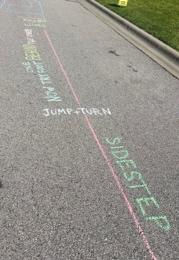Visual Ideas for Speech and Language Practice at Home
- All Care Therapies

- Dec 16, 2021
- 3 min read
Updated: Dec 16, 2021
The three main learning styles are auditory, kinesthetic, and visual. Everyone has different learning styles (or mixtures of them), and we spend our school years figuring out which ones work best for us. When brainstorming ways to practice speech and language at home with your kids, it’s important not to forget about our potential visual learners!
Visual learners remember information better by seeing charts, diagrams, pictures, or shapes. Extensive auditory input may not be the best way to get a message across to them, and they will likely prefer directions in written form when compared to spoken. Using pictures, visual representations, mnemonics, photographs, and different colors may appeal to visual learners more than auditory or kinesthetic learners.
Below are some easy ideas to practice various speech and language goals that provide your child with visual help to go along with any auditory help you may already be giving them.
1) Dots for anyone working on producing multi-sound words (i.e., d-o-g), multi-syllable words (i.e., oc-to-pus), or multi-word utterances (i.e., help me please). To get the most out of these visuals, you can begin by saying the portions of the desired response while you point at or tap each dot. For example, if working on multi-syllablic words, point and say “bas-ket-ball”, while your child's attention is on the dots. You can draw the number of dots needed on any piece of paper, in any color or shape! If you want to get fancy, you can turn it into an item of interest to your child, such as a butterfly, dog, car, or dinosaur, like below!

2) A great long-term visual aid to have around the house is a “tally counter”. This could be applied to just about any speech or language goal! You can mark a dot off if you hear a target sound produced correctly in speech, if you hear correct use of an irregular past tense verb, if you hear your child speak fluently, or if your child asks a follow up question or stays on topic throughout a conversation! You can have as few or as many dots as you wish, which should vary based on the nature of the practice. For example, speech sound practice may allow for more repetitions during speech, while language or social communication practice may be less frequent in repetitions. You can find examples online, or make your own so you can customize them to your child’s liking!


3) If practicing a skill for a specific amount of time, visual timers can be a life saver! These may prove especially helpful to children who are routine-based, children who benefit from knowing a game plan ahead of time, or who are impatient to finish practicing. These timers can be a useful tool for children with feeding disorders, so that they can establish a routine around mealtimes and visualize how much more time they will have at the table. These visual timers can be found easily online, and either digital or stopwatch style countdown will work!

4) When children who stutter are first learning about the nature of their speech, it may be described to them as “bumpy” or “smooth”. This message may be more easily received if they have a visual to go along with it. By taking a quick look around the house, you’ll likely find some bumpy and some smooth things. For example, an avocado could be something bumpy, and a pillow could be something smooth. Drawings or visuals like the one below could also aid in visualizing the different types of speech that people who stutter have.

References
Characteristics of Learning Styles. (2021). Lincoln Land Community College. https://www.llcc.edu/student-services/cas/helpful-handouts/characteristics-of-learning-styles-2/




Comments